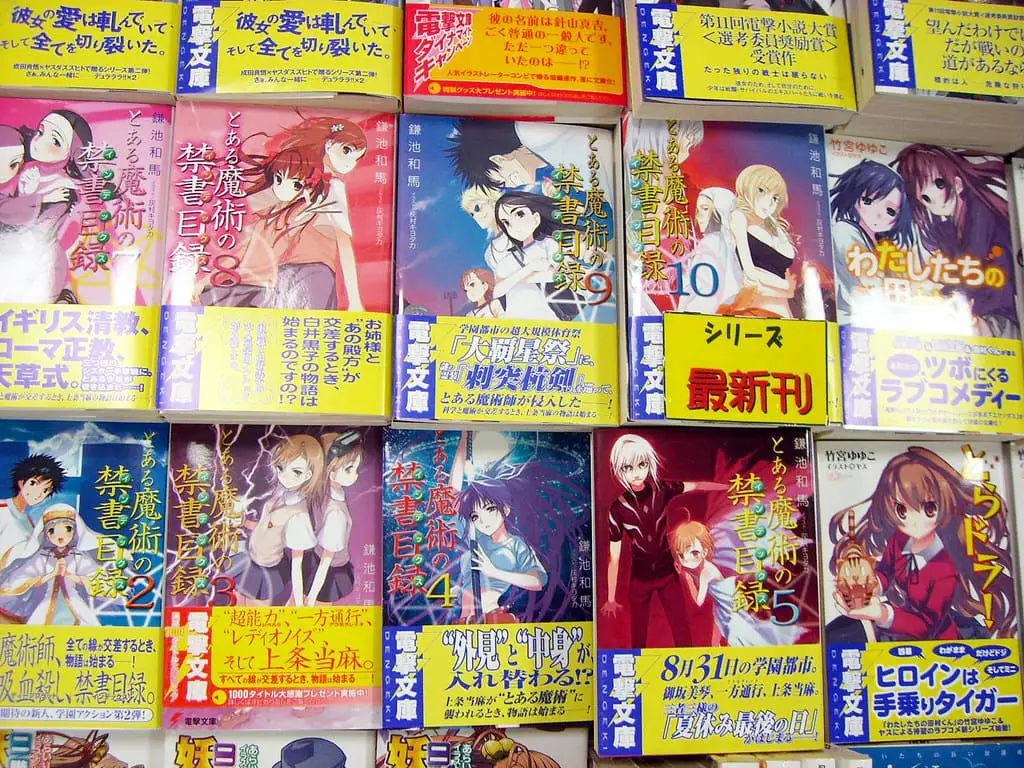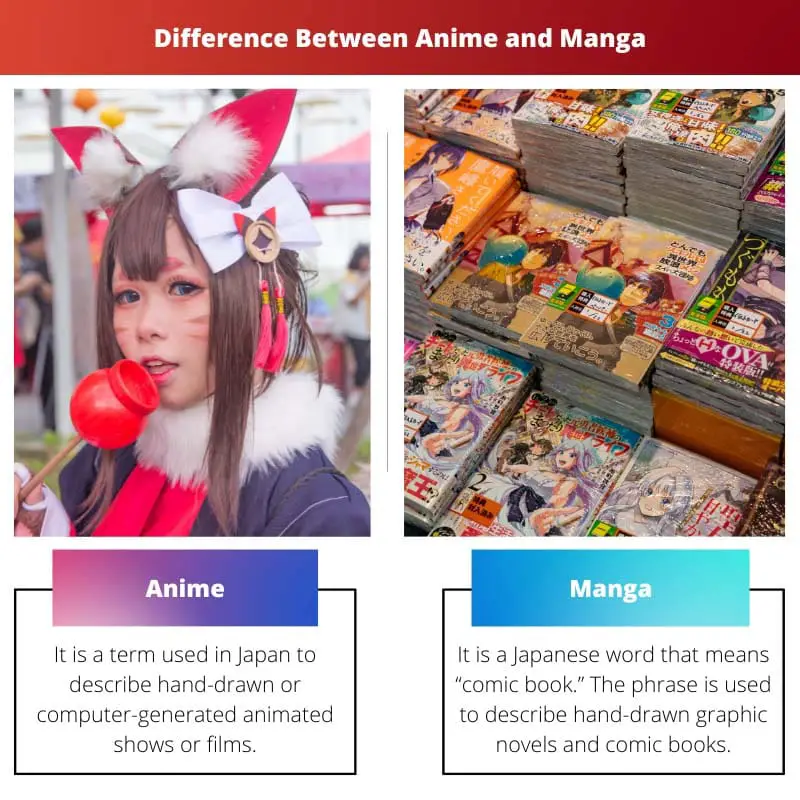Anime and manga are two types of Japanese cartoons that have become more popular in Western nations since their introduction.
It can be challenging to tell if an anime is distinct from manga for those unfamiliar with anime, manga, or the anime vs. manga argument.
Key Takeaways
- Anime is a form of Japanese animation, while manga is a Japanese graphic novel or comic book.
- Anime involves motion and sound, whereas manga relies on static images and written dialogue.
- Both art forms share similar storylines and characters, but the experience of consuming each is different.
Anime vs Manga
The difference between anime and manga is that anime refers to the Japanese term for animation, and manga is the Japanese term for comics. Anime stories are targeted at various audiences and produced in colour, and manga stories are targeted at teens or adults and produced in black and white.

Anime is a Japanese style of hand-drawn and computer animation. Anime can be traced back to the twentieth century. Anime stories are shorter than manga stories and feature much colors.
They cover various genres and appeal to a wide range of consumers. Anime is released in theatres, on television, home media, and over the Internet.
Manga is a Japanese term for comic books or graphic novels. Manga’s beginnings can be traced back to the late 1800s. It includes various genres, including action, comedy, detective, and action.
Manga stories are longer than anime and are only available in black and white.
Comparison Table
| Parameters of Comparison | Anime | Manga |
|---|---|---|
| Definition | It is a term used in Japan to describe hand-drawn or computer-generated animated shows or films. | It is a Japanese word that means “comic book.” The phrase is used to describe hand-drawn graphic novels and comic books. |
| Origin | Anime can be dated back to the 20th century. | Manga can be dated back to the late 19th century. |
| Audience | Colour | Targeted majorly for teens and adults, sometimes created for kids. |
| Anime is full of colour. | Manga stories are written in black and white, but some are in colour. | Stories are short and concise and can be resolved in two-three episodes. |
| Length of Stories | Stories are long, and conflicts require multiple chapters for resolution | Stories are long, and conflicts require multiple chapters for resolution. |
What is Anime?
Anime is a Japanese style of hand-drawn and computer animation. Japan’s first commercial animations were released in 1917.
With the works of cartoonist Osamu Tezuka, a distinctive art style arose in the 1960s and spread over the following decades, attracting a significant home audience.
Anime is released in theatres, on television, home media, and over the Internet. Aside from original works, the animation is frequently based on Japanese comics (manga).
It is divided into several genres cateringa variety of comprehensive and particular audiences.
Anime is frequently classified by the target demographic, including children’s, girls’, boys’, and various adult-oriented genres. To appeal to both boys and girls, anime includes characteristics that are popular with both genders.
Adult anime may have adult themes and situations, as well as a slower pace or increased plot intricacy that younger people may find undesirable.
Anime is a multidimensional medium with its own production techniques that have evolved in response to new technologies. This film combines graphic art, characterization, cinematography, and other imaginative and individualistic skills.
In comparison to Western animation, anime production places a greater emphasis on scene detail and the use of “camera effects.” Characters can have various sizes and traits, with large, expressive eyes being a common defining feature.

What is Manga?
Manga is a Japanese term for comic books or graphic novels. Most of the manga follows a late-nineteenth-century Japanese style, but the genre has a lengthy heritage in previous Japanese art.
Manga is a Japanese term that refers to both comics and cartooning.
Outside of Japan, the phrase is mainly used to describe the first published comics. Action, adventure, humour, detective, drama, and suspense are just a few popular genres in Japan.
Many manga series have been translated into other languages. Manga has also grown in popularity around the world. Beginning in the late 2010s, manga started to outsell American comics by a large margin.
Manga stories are produced in black and white. This is done mainly because of time constraints, printing costs, and creative considerations since sometimes colouring can diminish the true and complete effect of the artwork.
Although, sometimes full-colour manga exists.
Manga is serialized in huge manga magazines in Japan, with many storylines given in a single episode and continuing in the next issue.
A manga artist works in a small studio with a few helpers and collaborates with a commercial publishing company’s creative editor. Manga is frequently based on previously released live-action or animated films.

Main Differences Between Anime and Manga
- Anime is the Japanese term for animation, whereas manga is the Japanese term for comics.
- Anime was first introduced in the 20th century, and manga was introduced around the late 18th century.
- Anime is targeted at both mature audiences and children, whereas manga is targeted towards teens and adults.
- Anime is full of colour, but the manga is created in black and white.
- Anime stories are short in length, whereas manga stories are longer.

References
- https://books.google.com/books?hl=en&lr=&id=6dDfBQAAQBAJ&oi=fnd&pg=PP1&dq=difference+between+anime+and+manga&ots=apLYH9StLS&sig=QBK6vx909urHLf0SUWLr55qFRcs
- https://books.google.com/books?hl=en&lr=&id=deiYbEbJY3UC&oi=fnd&pg=PA347&dq=difference+between+anime+and+manga&ots=e_5TfN-foI&sig=QSyCVAaQmcRfsvw3FORglOk77os

argumentative
negative
positive
ironic
comical
sarcastic
mixed tone
Informative